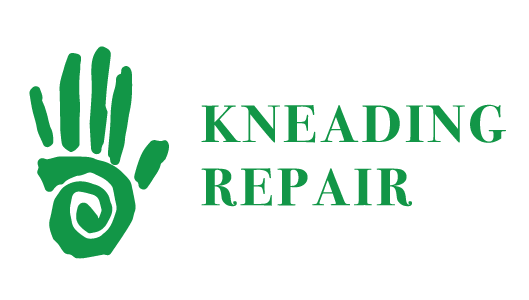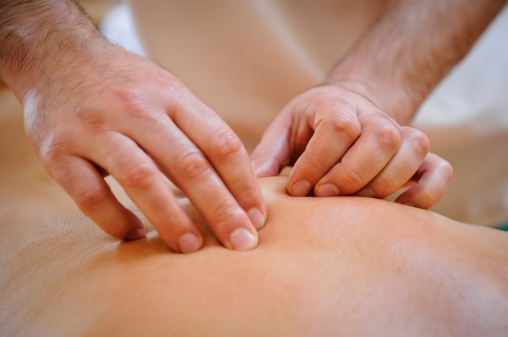A decade of research and clinical practice has lead to significant progress in the treatment of chronic pain by integrating Eastern and Western therapies into one easy-to-use modality.
A new direction to the treatment of pain
Microcurrent Point Stimulation, or MPS, is a noninvasive treatment of chronic neuromyofascial pain that is grounded on the principle of drug-free manipulation of the autonomic nervous system by combining Eastern philosophies and Western neurology. This integrative knowledge is then woven into easy-to-apply protocols, which are then treated with MPS-concentrated microcurrent stimulation (within the scope of practice for licensed massage therapists) or manually applied through acupressure.
What makes MPS unique is that this simplified, easy-to-apply and highly effective pain therapy can, in many cases, produce instantaneous outcomes. “Much of chronic pain is musculoskeletal in nature, and much of that is muscular,” says Jay Shah, M.D., a physiatrist in the National Institutes of Health’s (NIH) Clinical Center. “The theory is that by stimulating acupuncture [and trigger] points, you can significantly relax muscles and the nervous system, and therefore, relieve pain.”
MPS: a massage perspective
William, an MPS practitioner and massage therapist for eight years, was referred a difficult patient: a 60-year-old male Vietnam veteran suffering from bursitis of the left shoulder for more than two years. The client, desperate for help, tried chiropractic, physical therapy, trigger-point injections, acupuncture and traditional massage therapy with little or no outcomes—and in many cases, his pain was worse. He described the pain level as “9.5/10,” significant, William thought, for a client who admitted refusing anesthesia during dental procedures.
Given the client’s difficult history and tough constitution, William decided to approach this client unconventionally. He started his session by asking him if he had any visible scars located on his body. The client indicated he had several scars, one located over his left eye, the result of a childhood injury. Two other scars were also located in the mid tibialis-anterior region of the shin on both legs, a result of a battlefield injury. William released all three scars bilaterally and then finished the session by stimulating some acupuncture points, targeting emotions. The client’s pain level immediately dropped from a 9.5 to a 0. Three years after this treatment, the client’s pain levels did not return.
Basis of MPS therapy
Knowledge of what drives the pain cycle, acupuncture points and philosophies, as well as concentrated microcurrent stimulation (CMS), is the basis of MPS therapy. First, understanding the relationship between up-regulation of the autonomic nervous system and chronic pain is a key. Medical research and years of extensive clinical trials has determined that the following two pathologies hold the greatest influence of up-regulating the autonomic nervous system (ANS) and sympathetically producing a state of fight or flight. This sympathetic up-regulation is what drives the chronic pain and disease cycle.
1. Subclinical Radiculopathy (nerve root impingement). A medical term referring to the impingement of nerves and its role in the heightened sensitivity of the ANS that controls the pain cycle. Subclinical radiculopathy refers to the soft-tissue changes surrounding the nerve-root entrapment. Applying CMS paraspinally
to erector spinae muscles relaxes tissue and releases impinged nerves, reducing pain and sensitivity. Neurologically, lower back nerve roots influence leg pain and the neck controls the upper limbs.
2. MPS Scar (Neural) Therapy. Neural (scar) therapy was developed by two German physician-dentist brothers, Walter and Ferdinand Huneke, in the 1920s and ’30s. They accidentally found that when procaine is applied into certain spots, such as scars, it can significantly relieve pain in areas far away from the place of application. The brothers called these spots “interference fields.”
The tissues in which interference fields are found can be shown to have abnormal cell membrane resting potential. This creates electrophysiological instability and abnormal afferent signals, which, in turn, trigger abnormal ANS responses, or heightened sensitivity in patients. Applying MPS directly around the scar restores cell membrane electrical potential to normal, improving cellular metabolism, instantly softening and reducing the scarred tissue. This healthier, local tissue environment facilitates fascia release throughout the body, producing structural realignment and deregulation of the ANS (pain relief). Results are often permanent.
Acupuncture philosophies
Acupuncture points are essential building blocks of MPS therapy. Key acupuncture points like H7 (valium point) can quickly calm a heightened nervous system and release endorphins, reducing patient guarding and improving functionality. This process also influences tissues, muscles and pain levels and can significantly help massage therapists quickly reduce their workload and improve client outcomes.
Method of MPS application–CMS
CMS is the preferred method of application for MPS therapy for a variety of reasons. First, concentrated DC stimulation can clinically duplicate the “De Chi” of traditional acupuncture therapy, including nociception, endorphin, histamine and energetic responses, but do so noninvasively, in a fraction of time of needles. Second, CMS also has the ability to relax contracted muscle tissue, responsible for the nerve impingement(s) found in cases of radiculopathy. Thirdly, MPS may be applied during massage to help release local trigger points and avoid patient guarding. Finally, MPS Therapy can save enormous amounts of time and effort for massage therapists, significantly improving outcomes while reducing their own repetitive strain injuries and chronic pain.
“MPS has been a huge bonus for my practice,” says Joe Durant, L.M.T. “As a massage therapist in a clinical pain setting, I was having difficulty with many of my chronic pain patients and I was noticing I was developing carpal tunnel myself. MPS significantly boosted my patient outcomes, and its ease of use made massage therapy easier on my hands, eliminating my carpal tunnel.”
James Armstrong is a freelance writer based in Jacksonville, Florida. For more information about MPS Pain seminars, contact MPS Therapy at (800) 567-7246 or via e-mail at MPStherapy@yahoo.com. Contact Armstrong at freelanceJarmstrong@gmail.com.

